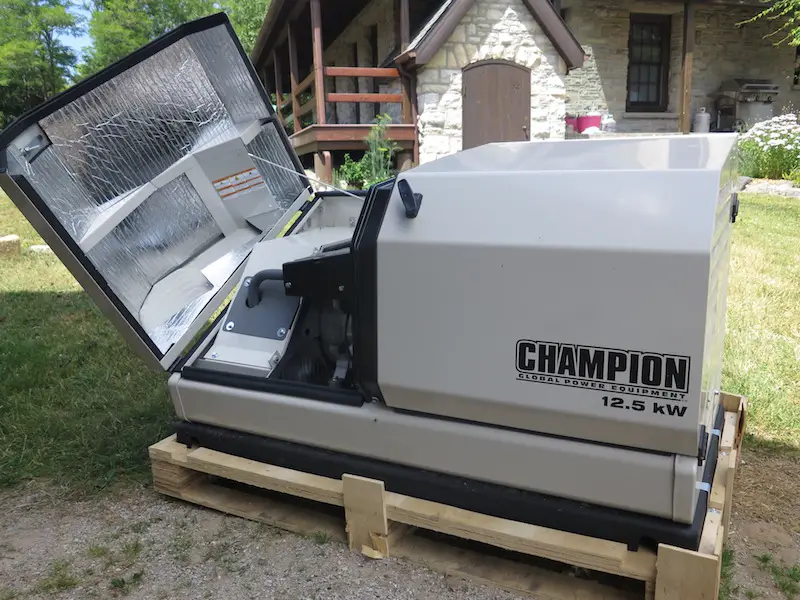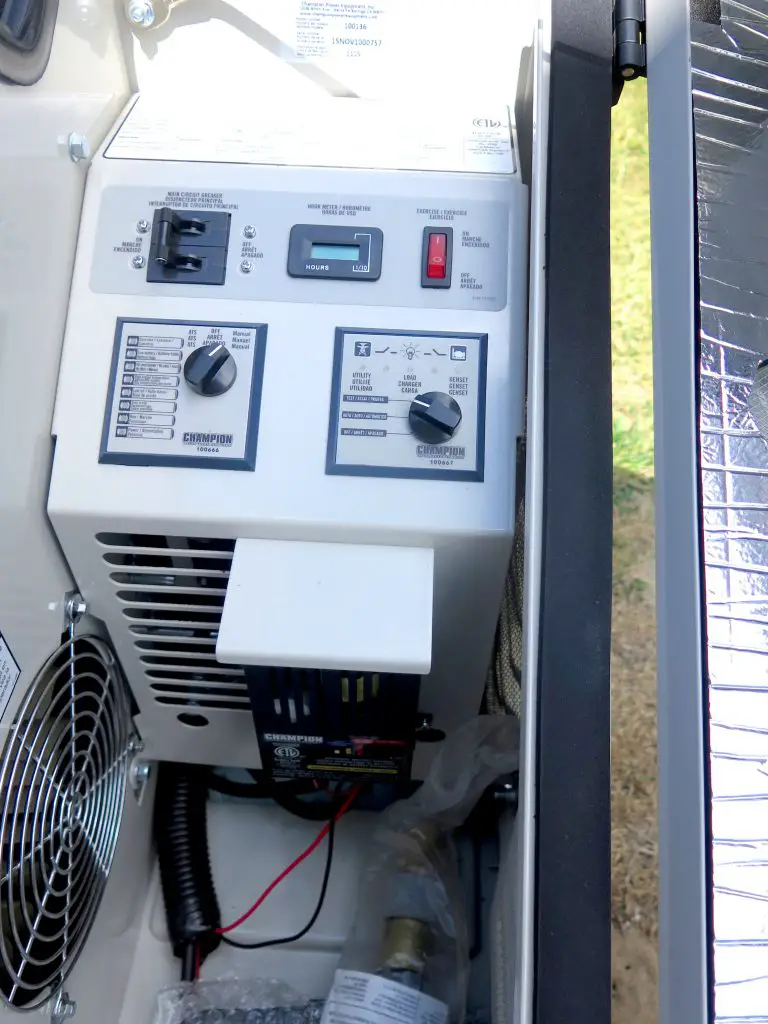UPDATED 3Jul2020 + video below: Where I live in Canada we get about a dozen electrical power failures each year. Some of these are short, lasting only a few minutes. Other failures are 8 hour-long “scheduled” power interruptions that shut down entire business sectors for the day. At best this is all very annoying. At worst it makes me wonder what’s happening to our world. There’s no doubt that the reliability of electric power has declined over the last 30 years – at least where I live, anyway. So why are we less able to operate a decent country than in years past? I have my theories, but there’s relief as far as electricity goes. The quality and affordability of automatic backup generators has risen big-time over the last decade. What’s an automatic generator? You can see one below.

The idea of an automatic backup generator is new to most people, but I’m seeing more and more of these units being installed outside homes, businesses, medical clinics and office buildings. One small community near my place even has one huge automatic backup generator for the entire village. Why are things changing? It’s not just because people are tired of grid power they can’t count on. Automatic generators are getting better and cheaper.
Automatic backup generators create electricity for your home when the grid fails, but these models operate differently than the kind of portable generators that you might already know about. Backup models are stationary, sitting on the ground outdoors all year long within a weatherproof enclosure. They’re permanently connected to the wiring in your house and they can also sense the presence or absence of power coming from the grid. So when a power failure happens, your backup generator fires up automatically, providing you with a constant source of electricity. When grid power comes back on, the generator shuts itself off. Below you can see the control panel of the generator at my house.

The really surprising thing to me is how inexpensive backup generators have become. Here’s what I mean . . . In 1988 I bought a portable 3500 watt generator for $3500. This size of unit is enough to power a kettle and fry and egg at the same time – nothing more. The price I paid translates to about $6350 in today’s money. Fast-forward to 2016 and you can get a 12,500 watt automatic backup generator with the necessary switching gear for $4500. A unit like this delivers enough power to handle most things in an ordinary house all at the same time, delivering 350% more power than my first generator did, but at 40% less money. Like I said, given the decline of power reliability, this whole cheaper-and-better automatic generator thing is good news, but there’s a drawback.
Automatic backup generators operate without control from you, but they do require some serious installation work first. They need a base to sit on outdoors, they need to connect to your existing household wiring, and they need to connect to a tank of propane or natural gas pipe to operate. But once all that’s done, power failures become little more than power flickers as your backup unit automatically kicks in as needed.
After years of pulling out my portable generator when power goes out, hooking it up, then putting it away again when the power comes back on, the automatic backup generator has changed this. I went with a brand called Champion. They offer the best combination of good price, impressive reviews and customer service that I’ve seen.
Regardless of the type of automatic backup unit you choose, you’ll need some kind of a platform to park the thing on. Watch the video below to see how I built a heavy-duty support pad for my generator, without pouring any concrete.



